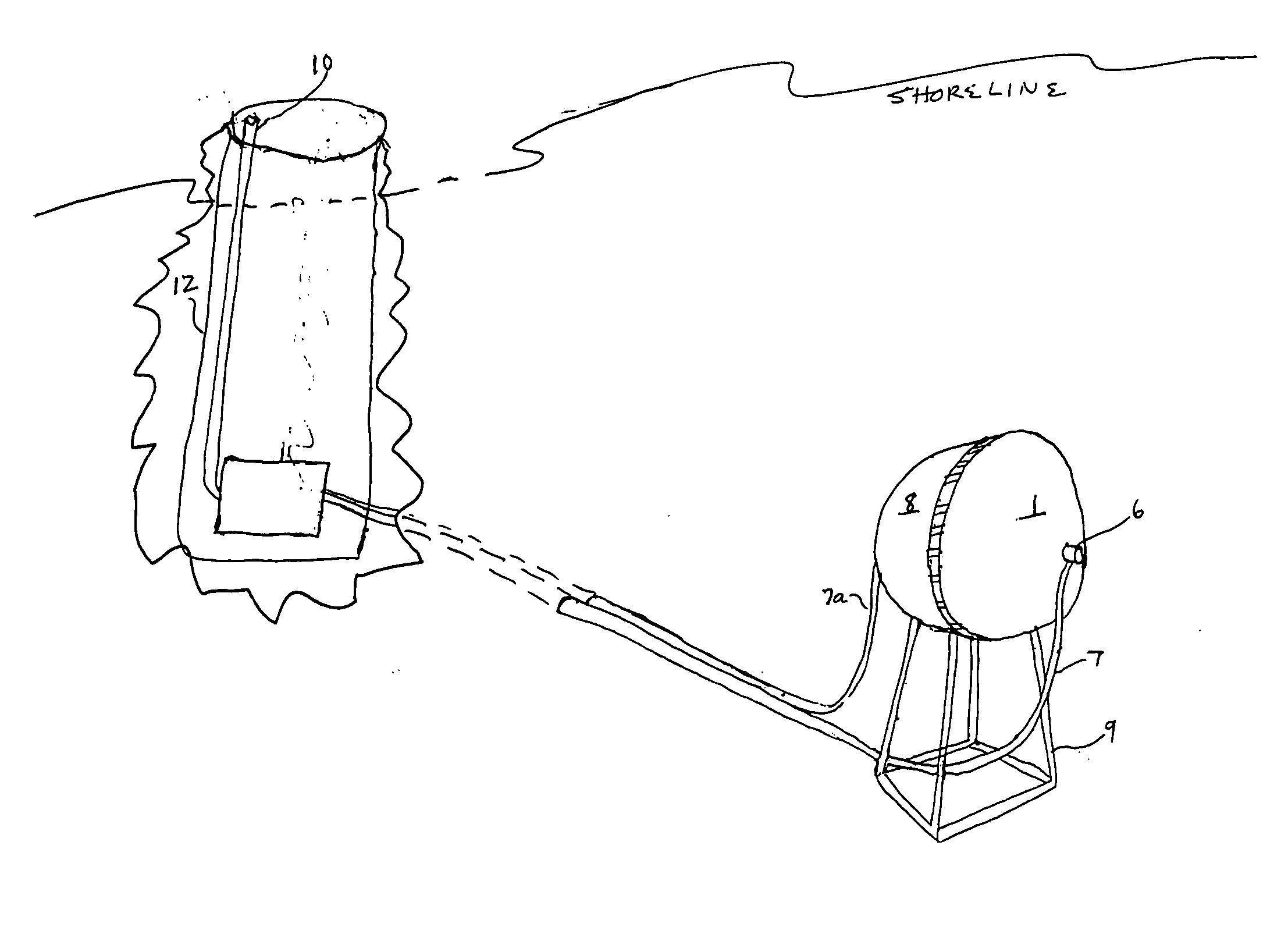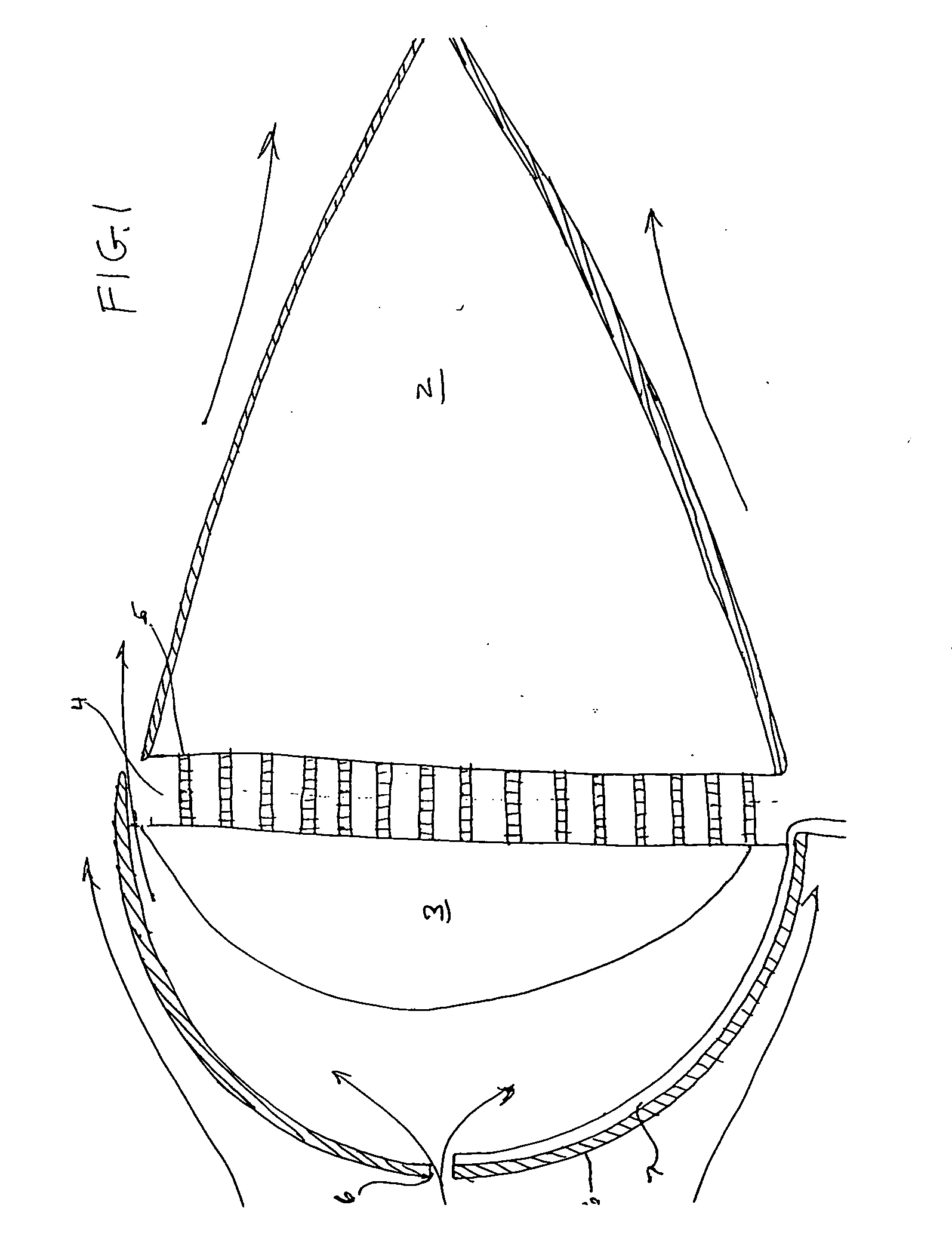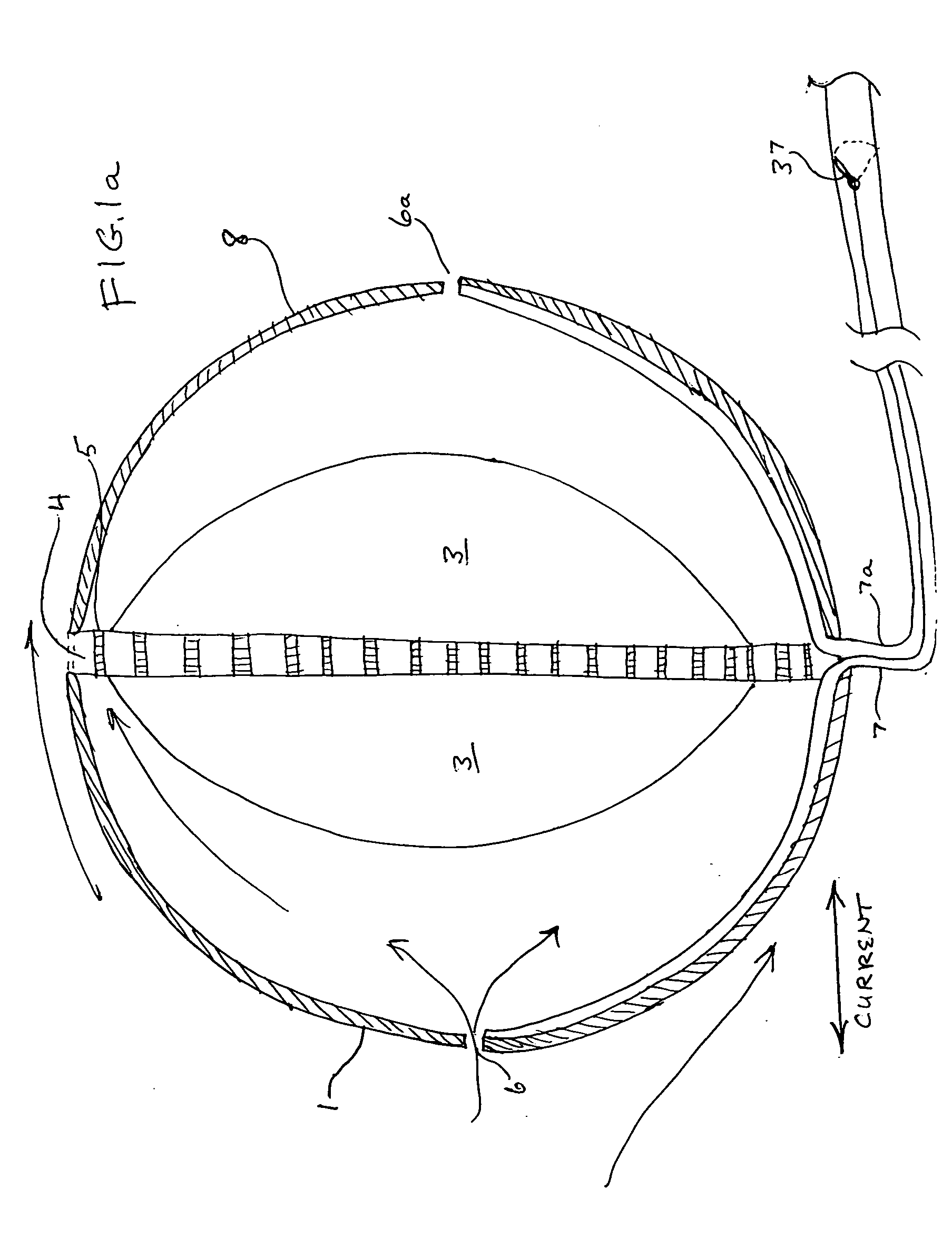Converting energy from flowing fluids into electrical energy
a technology of electrical energy and flowing fluids, applied in the direction of fluid couplings, couplings, machines/engines, etc., can solve the problems of large and expensive pipes, complicated and expensive equipment, etc., and achieve the effect of inexpensive and effective electric power
- Summary
- Abstract
- Description
- Claims
- Application Information
AI Technical Summary
Benefits of technology
Problems solved by technology
Method used
Image
Examples
first preferred embodiment
[0025] Turning to FIG. 1 there is shown a cut-away section of a hollow dome 1 fixed to a hollow cone 2 by intermittent spacers 5 making space 4. There is shown hole 6 and a tube 7 whose open end lies near hole 6. A second hollow dome 3 is affixed to hollow dome 1 at its rim.
[0026] In operation, as working fluid, which is wind, passes around the teardrop shape 1,2 this working fluid is pulled through hole 6 and out space 4 with dome 3 serving as a further guide to the working fluid.
[0027] In FIG. 3 we see the apparatus of FIG. 1 mounted on base 16, tube 15 and telescoped tube 14. Thrust bearings 19a,b allow the apparatus to be rotated according to wind direction by rudder 13.
[0028]FIG. 4 shows how varying pressure in tube 7 may be converted into electrical energy. Valve 36 is a three way valve admitting either reduced pressure from hole 6 or atmospheric pressure from tube 21 which is open to the atmosphere. Mounted on supports 19,20 are three shafts, 32,33,34. On shaft 32 are moun...
second preferred embodiment
[0030] In FIG. 1a there is shown how to apply the apparatus of FIG. 1 to convert the energy of subsurface ocean energy to electrical energy ashore. Support 9 supports the apparatus of FIG. 1a on the bottom of the ocean so holes 6,6a are made to face an oncoming current which may change direction 180 degrees. Pressure energy in pipe 7 is correspondingly reduced at the end of pipe 7 at the bottom of excavation 12 when 3-way valve 36 is opened. Pipe 7a is led to near hole 6a for use when the current reverses direction. Valve 37 is made to alternately open and close pipes 7,7a according to the prevailing direction of the current.
[0031] In FIG. 5 we see an alternative way to convert varying pressure in tube 7 into electricity as the invention is applied to the conversion of the energy of subsurface ocean currents. Tube 7 is led into an onshore excavation 12 and is made to end horizontally as a Bourdon tube 22. Three way valve 36 is revolved and pressure from tube 21 alternates with the ...
third preferred embodiment
[0032] Turning to FIG. 6 we see a wheel and axle device as a disc 11 mounted on shaft 15. Tube 17 is located radially within disc 11 with openings near the rim. Tube 17 is bent at disc 11 axis and laid through the axis of shaft 15 which is operatedly connected to turbine 42, shaft 43 and generator 35. Rotateable seal 46 is mounted on tube 17 so only a portion of tube 17 revolves with disc 11.
[0033] In operation as disc 11, possibly a waterwheel, vehicle tire, or a gear is made to rotate then air is thrown out of tube 17 through openings 17,a-g. which each are of the same diameter as tube 17. These openings are near disc 11 rim. This is accomplished by inertia and a lifting force on the air in tube 17. The lowered pressure in tube 17 provides an energy sink to operate turbine 42 and electric generator 35.
PUM
 Login to View More
Login to View More Abstract
Description
Claims
Application Information
 Login to View More
Login to View More - R&D
- Intellectual Property
- Life Sciences
- Materials
- Tech Scout
- Unparalleled Data Quality
- Higher Quality Content
- 60% Fewer Hallucinations
Browse by: Latest US Patents, China's latest patents, Technical Efficacy Thesaurus, Application Domain, Technology Topic, Popular Technical Reports.
© 2025 PatSnap. All rights reserved.Legal|Privacy policy|Modern Slavery Act Transparency Statement|Sitemap|About US| Contact US: help@patsnap.com



